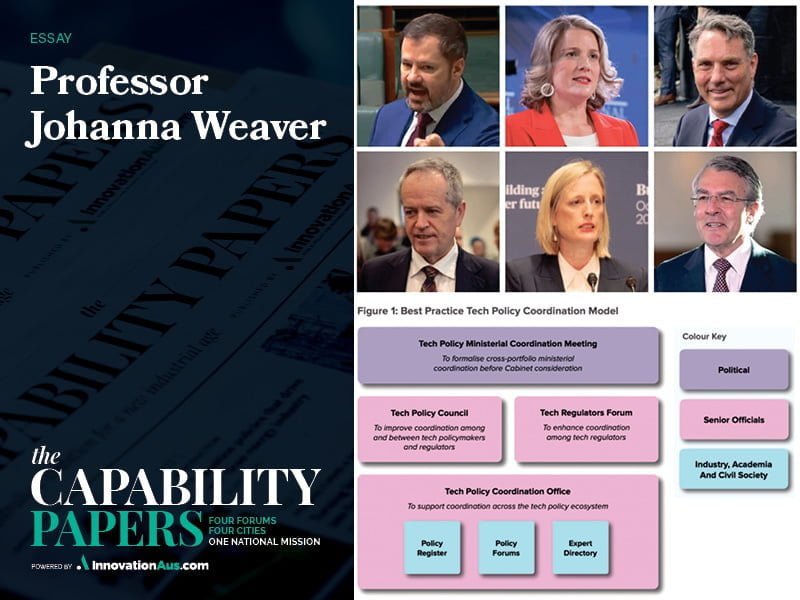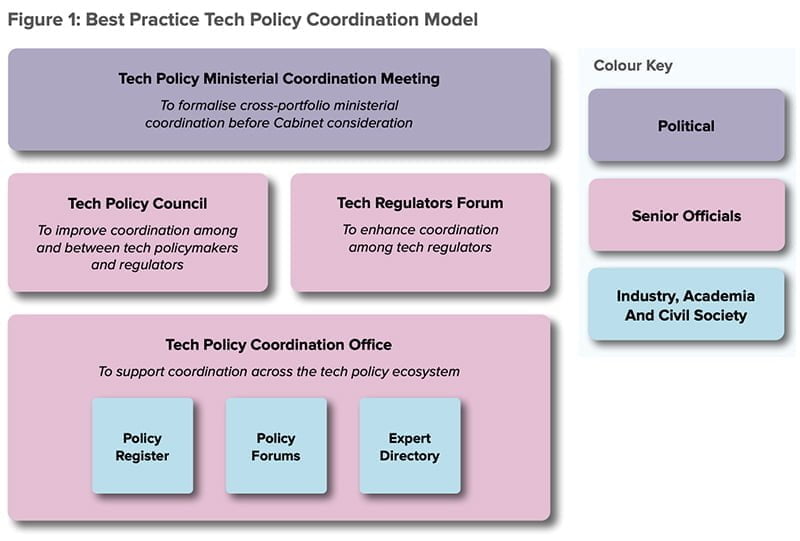The Albanese government has shown a clear commitment to uplift Australia’s technology capability, but does it have a minister willing and able to lead a coordinated national effort?
Siloed development and implementation of government policy is an age-old problem – but it is not intractable, and the payoffs of a coordinated approach warrant fresh thinking.
Breaking down silos between ministers and across the Australian Public Service (APS) will unlock and force multiply Australian capability.

Consider the diversity of responsibility for some of the largest funding commitments in Australian history.
- The National Reconstruction Fund: Minister Husic, and the Department of Industry and Science and Resources.
- The Advanced Strategic Capabilities Accelerator, AUKUS Pillar 2, and REDSPICE: Minister Marles, and several different portfolios within the Department of Defence.
- Australian Government Digital Services, including myGov: led by Ministers Gallagher and Shorten, and departments of Finance and Social Services, among others.
Likewise, consider the diverse lines of responsibility and processes of several ongoing tech policy and law reform processes.
- Privacy Reform: led by Attorney General Dreyfus, and the Attorney General’s Department.
- Cyber Security Strategy: led by Minister O’Neil, and the Department of Home Affairs.
- Artificial Intelligence: led by Minister Husic, and the Department of Industry Science and Resources.
It is proper for different ministers and departments to lead different initiatives. However, if these efforts are not coordinated, it will result in duplication, dilution, and persistent legal and policy gaps.
At the Tech Policy Design Centre at the Australian National University, we researched best practice coordination models, drawing from Australian history and international examples. Our report, Cultivating Coordination, proposes a model ready for immediate implementation in Australia.
The pinnacle of the model is a Ministerial Coordination Meeting to formalise cross-portfolio ministerial coordination. These issues are too important to Australia’s future to depend upon ad hoc meetings between ministers and short updates to Cabinet.

The APS also has a crucial leadership and stewardship role.
Our model proposes a secretary-level Tech Policy Council to improve coordination among and between tech policymakers and regulators (incidentally, in 2022, when in opposition, Labor called for the establishment of such a Council).
Another critical feature of the best practice model is the Tech Policy Coordination Office to steward coordination across the APS, act as an entry point and concierge for external stakeholders, and foster a central pool of tech talent to serve as an in-house APS consultancy.
You can read all the fine print in our report, but implementation of the model would be effectively cost-neutral, and the net benefits of increased coordination would be significant.
Leadership is everyone’s responsibility – but it is essential that disbursed leadership doesn’t limit opportunity or inhibit holistic accountability.
To deliver the generation capability uplift that Australia needs, the leaders of the leaders must step up and drive a coordinated whole of nation effort.
Professor Johanna Weaver is the founding director of the Tech Policy Design Centre at the Australian National University. Earlier she was Australia’s chief cyber negotiator at the United Nations. A recovering diplomat and a reformed commercial litigator, Johanna is proudly neurodiverse and a passionate advocate of diversity and inclusion.
Do you know more? Contact James Riley via Email.

